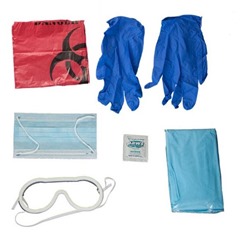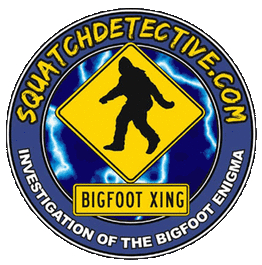Here’s a thought for researchers and one too often we don’t think about.
What if you come across an actual “nest” or properly coined a bedding area of a Sasquatch?
What is you come across blood or a stool sample?
Aside from following good forensic collection techniques and scene isolation and investigation, some of which can be found here at the Squatchdetective University investigation page, one must consider the biohazard impact of what sample that can be left behind, especially if fresh evidence is collected.
Many years ago as a I was working my way becoming a medic, one of the many elective courses that were offered was an infection control course, which of course opened our eyes to the dangers of having open wounds, or mucous membranes being exposed to material which could infect our bodies, in some cases having severe and or long term effects.
We must remember, that especially in the animal kingdom and within the order of primates, certain evolutionary adaptations have occurred that may leave one genus immune to a virus or bacteria which leaves another vulnerable to.
Even across the same types of genus, living in different locations certain environmental resistances to biohazards can by happenstance, take for example the toll smallpox had in the early Americas on the native peoples.
The introduction of new viruses, bacteria and diseases unbeknownst to common medical practice can occur as well. Not only did we bring small pox to the Americas, but conversely Syphilis, was brought to Europe due to exposure from the Americas. Also note that Yellow Fever, was once indigenous to Africa, travelled to America thanks to the heinous slave trade.
Exposure to germs at a young age, as many Europeans living in dense cities at the time, had exposure to rodent germs, which in the Americas, did not. Much like the way they are trying to combat allergens, by introducing foods like peanuts, in small doses in toddlers and small children to build natural tolerances.
There are certain primate diseases though may not be common to Homo Sapiens (modern humans) but also within the order itself. There are also strains of disease that old world primates, versus new world primates may have a resistance to and vice versa.
Getting back to our Sasquatch issue, leads to many hypothetical situations. First and foremost, communicable disease is not just limited to a specific order set like primates. They can jump orders. The rat, (Order Rodentia) certainly was responsible for transmitting smallpox and bubonic plague throughout Europe causing the dreaded pandemics of such. Of course, one of the biggest order jumpers we hear about is rabies.
Now we can speculate all day long, what disease can be communicated on either side, but it is just that; speculation.
So here’s some simple things to carry in the field, to be mindful of the slight possibility of such contaminants.
Carry a small biohazard kit. It doesn’t take up much space or room on your person, and there is no need for a high tech respirator, especially since an airborne pathogen is unlikely unless you come face to face with Ol’ Hairy.
But protecting the mucous membranes of your mouth, and nose is important, so a simple mask will do.
The beauty of this kit is not only will it most likely keep you from becoming contaminated by biohazard, but it will keep you from cross contaminating potential DNA evidence. So it works two fold here.
Finally you also want to keep on hand some post collection products, such as hand sanitizer, and eye wash, which should be part of your field first aid kit.
The biggest thing is, both before and after of inspection and collection of any biological or DNA evidence, wash up both before and after to stop the contamination either way.
Not only is this for our own safety, but it also keeps our evidence safe. And please note…DO NOT KEEP DNA evidence in plastic baggies.
Plastic bags retain humidity and can quickly degrade the viability of the evidence. Biological evidence should be kept in paper bags!!
Let’s keep safe out there this Spring, Summer and Autumn!!!
Till Next Time,
Squatch-D









Great point; since any dead bigfoot could have any number of things it died from and contacting any of those items could be possibly deadly to humans. Good food for thoughts on processing evidence.
Good tip. Just to ask under the assumption Bigfoot exist, would there be a possibility the creature is intelligent enough to be aware of what humans are and try to avoid tracking and detection by employing methods of hiding their presence such as burying stools?
Intersting thought. That’s one of those questions that would have to be answered down the line someday, but my guess would be just that a guess.